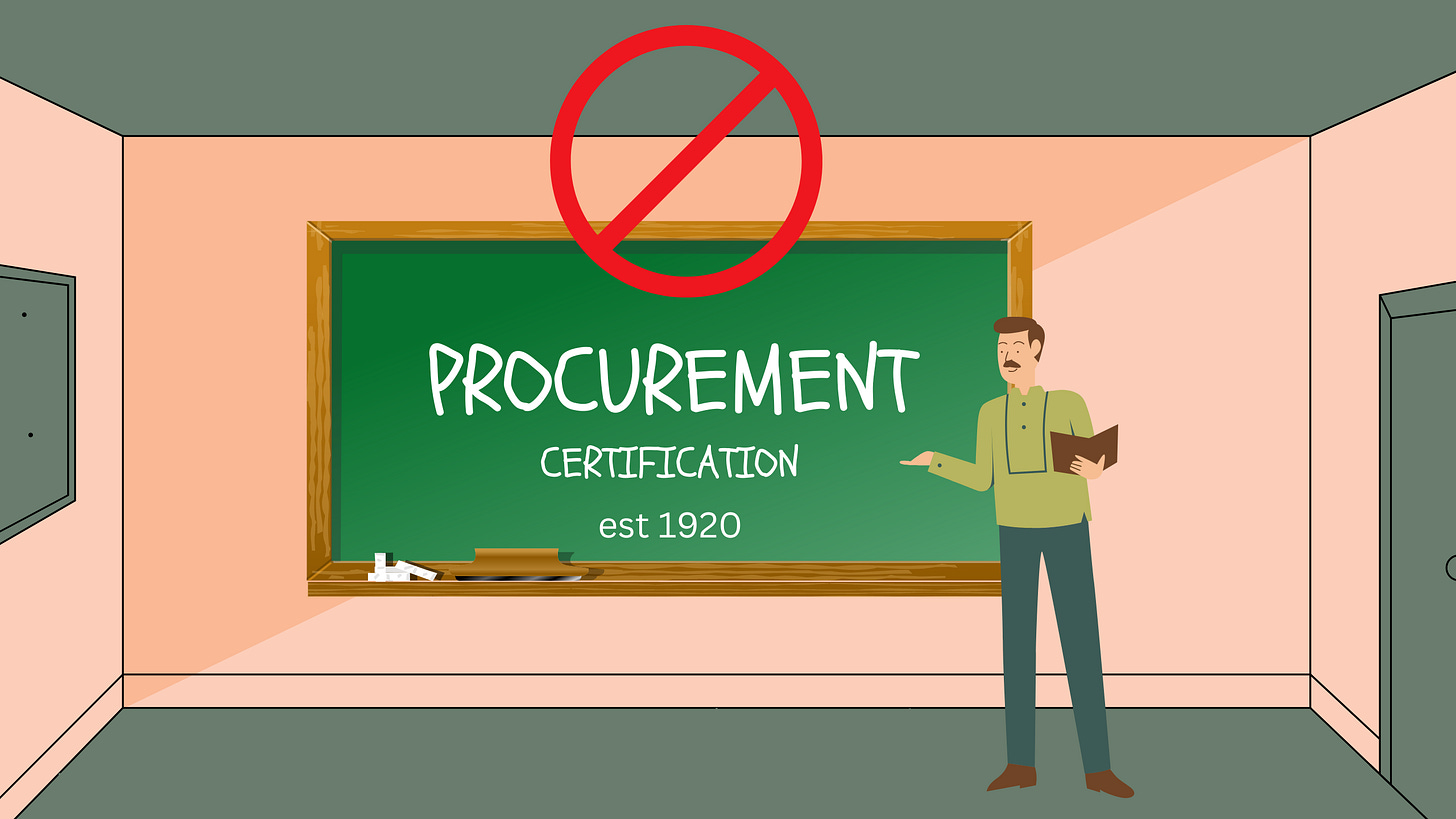Learning the A-Z of Procurement was Your Grandfather’s Approach
Most procurement and negotiation learning models need to go in a casket, asap.
Most procurement and negotiation learning models need to go in a casket, asap.
Major associations, the ones your grandfather may have been a part of, decided that the best way to prepare people for the profession of procurement was to teach them the A-Z of procurement.
And so they did. Multi-volume books were published that hit every single topic there was in procurement. And people were tasked with reading them. Which they did. Followed by intensive testing.
And this model still exists today with at least 3 very large global procurement associations. They excel at teaching and testing on the A-Z of procurement. Nobody does it better in fact.
The ONLY problem with this approach is that it’s….. totally useless.
And sure enough, these associations are having their chapters close their doors at an alarming rate.
I’ve yet to find the procurement professional who failed at a multi-million dollar negotiation because they didn’t know the A-Z definitions well enough. Because they missed test questions on definitions from chapter 3.
The problem is that this approach, while perhaps useful for someone who craves academic knowledge, completely ignores the Pareto Principle.
The Pareto Principle says that 80% of the solution can be achieved by attacking only 20% of the problem – the biggest 20%.
In procurement and negotiations, it’s even less than 20%. It’s way less.
Throw the books away. Stop driving to testing centers.
Our institute has done deep dive research on this with our Advisory Board and with the Fortune 100. Guess what we’ve found?
There’s just a few areas that are separating mediocre and incredible procurement and negotiation professionals. And not a single one of them are covered in any material way by these age old institutions.
The first is the transformation of the procurement life cycle to stop buying goods & services and to have an end to end laser focus on the exclusive acquisition of performance results.
We spend endless hours with clients helping them navigate this transition. And they won’t go back to the old way for all the tea in China.
The second is to stop focusing on at-the-table negotiation strategies with suppliers and to shift to away-from-the-table negotiation strategies.
Our entire industry’s focus is on how to hammer suppliers at the table. How to win at the table. Tactics. Counter-tactics.
That used to work really good for your grandfather and his generation. But it’s not nearly enough in the modern procurement era. We spend 0% of our time with clients trying to improve results in this arena. It’s not where the money is.
The third is to streamline and surgically remove costs out of the SOW/Spec that the business units generate for major purchases. We’re finding 18% cost savings on average in this space, and that’s before negotiating with suppliers!
The fourth is Investigative Negotiations and Value Creation. This entails finding out what keeps your suppliers awake at night and inventing options that solve these problems, in return for substantia price reductions.
The fifth is strategies to reduce supplier bargaining power and to increase procurement’s bargaining power. This has been especially powerful and needed during the pandemic.
The sixth is internal business unit influence strategies. Not compliance strategies, but influence strategies. Procurement, generally speaking, is really bad at this. We expect business units to fall in line like suppliers, and it never works.
The seventh and final category is the ONLY one being addressed by the major associations, and that is Total Cost Analysis. Nothing further needs to be stated about this, because you should already be doing this.
Chances are that you and your procurement organization are only adept at this 7th strategy.
And that’s what your grandfather’s certification program buys you.
It’s time for procurement to make the shift to the 21st century. Stop trying to memorize definitions from the A-Z books of procurement and supply management. Stop driving to testing centers.
CPSCM™ is very different than CIPS or any other procurement certification - Blue dart Express
It may help you get a job, but it won’t help you become a rock star in this profession.
Take a moment, think about all the procurement professionals you know (including yourself) & what percentage of them are really in this profession after careful career planning and are great at using the right principles for:
Designing for performance results framework
Procurement Contract Law
Design for TCO Framework
Design for TCO implementation
Investigative negotiations and value creation framework
Investigative negotiations and value creation implementation
Bargaining power management.
That number is in lower single-digit percentages, right?
That’s the whitespace to be in.
You can build a compounding career by being in the top 1%
If you are thinking of really building a compounding career, CPSCM™ is the right community of procurement leaders who can build value and competitive edge. With over 3000 procurement executives nailing their career bets inside the CPSCM™ membership experience, this is your tribe.
The CPSCM™ Certification does a deep dive on these above 7 areas and, you learn not just from any instructor who made his way to baseline requirements to be teaching.
You will learn and grow under the guidance of Omid Ghamami, who has been called upon to elevate the capability of the 50 Chief Purchasing Officers of the United States (with a collective $6.1 Trillion US budget!) and Harvard University’s world renowned Supply Chain Management program.
He has been called “The Secret Weapon of Fortune 500 Chief Purchasing Officers” by industry insiders – and hailed as “The Godfather of Negotiation Planning” by INTEL Corp - teaching you live is priceless. A noted procurement & negotiations Fortune 500 executive, author and professor, Mr. Ghamami has also has won countless industry awards for being a top 5 global procurement and supply chain influencer and leader.


